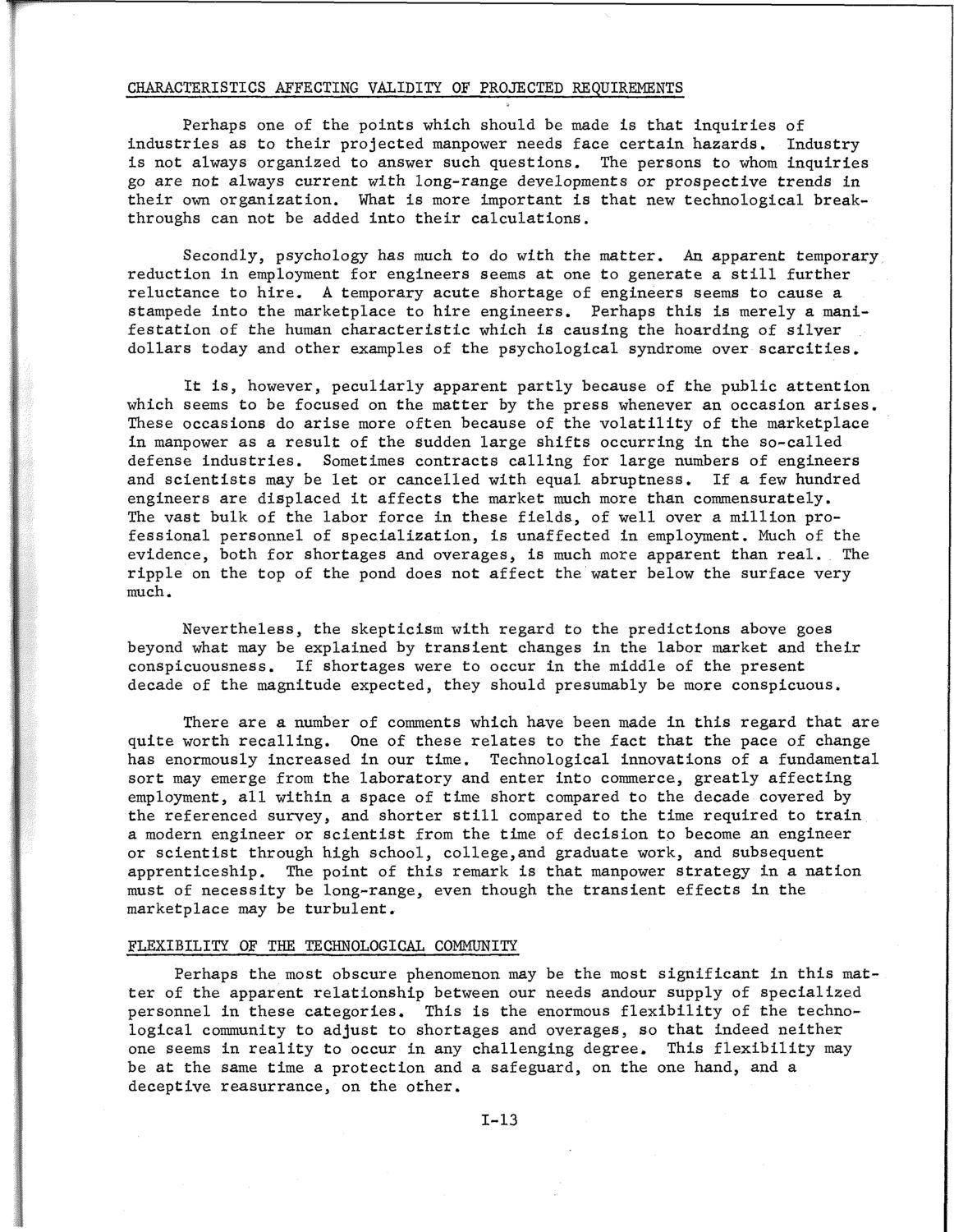| |
| |
Caption: SWE - Proceedings of the First International Conference of Women Engineers and Scientists
This is a reduced-resolution page image for fast online browsing.

EXTRACTED TEXT FROM PAGE:
CHARACTERISTICS AFFECTING VALIDITY OF PROJECTED REQUIREMENTS Perhaps one of the points which should be made is that inquiries of industries as to their projected manpower needs face certain hazards. Industry is not always organized to answer such questions. The persons to whom inquiries go are not always current with long-range developments or prospective trends in their own organization. What is more important is that new technological breakthroughs can not be added into their calculations. Secondly, psychology has much to do with the matter. An apparent temporary reduction in employment for engineers seems at one to generate a still further reluctance to hire. A temporary acute shortage of engineers seems to cause a stampede into the marketplace to hire engineers. Perhaps this is merely a manifestation of the human characteristic which Is causing the hoarding of silver dollars today and other examples of the psychological syndrome over scarcities. It is, however, peculiarly apparent partly because of the public attention which seems to be focused on the matter by the press whenever an occasion arises. These occasions do arise more often because of the volatility of the marketplace in manpower as a result of the sudden large shifts occurring in the so-called defense industries. Sometimes contracts calling for large numbers of engineers and scientists may be let or cancelled with equal abruptness. If a few hundred engineers are displaced it affects the market much more than commensurately. The vast bulk of the labor force in these fields, of well over a million professional personnel of specialization, is unaffected in employment. Much of the evidence, both for shortages and overages, is much more apparent than real. The ripple on the top of the pond does not affect the water below the surface very much. Nevertheless, the skepticism with regard to the predictions above goes beyond what may be explained by transient changes in the labor market and their conspicuousness. If shortages were to occur in the middle of the present decade of the magnitude expected, they should presumably be more conspicuous. There are a number of comments which have been made In this regard that are quite worth recalling. One of these relates to the fact that the pace of change has enormously increased in our time. Technological innovations of a fundamental sort may emerge from the laboratory and enter into commerce, greatly affecting employment, all within a space of time short compared to the decade covered by the referenced survey, and shorter still compared to the time required to train a modern engineer or scientist from the time of decision to become an engineer or scientist through high school, college,and graduate work, and subsequent apprenticeship. The point of this remark is that manpower strategy in a nation must of necessity be long-range, even though the transient effects in the marketplace may be turbulent. FLEXIBILITY OF THE TECHNOLOGICAL COMMUNITY Perhaps the most obscure phenomenon may be the most significant in this matter of the apparent relationship between our needs andour supply of specialized personnel in these categories. This is the enormous flexibility of the technological community to adjust to shortages and overages, so that indeed neither one seems in reality to occur in any challenging degree. This flexibility may be at the same time a protection and a safeguard, on the one hand, and a deceptive reasurrance, on the other. 1-13
| |